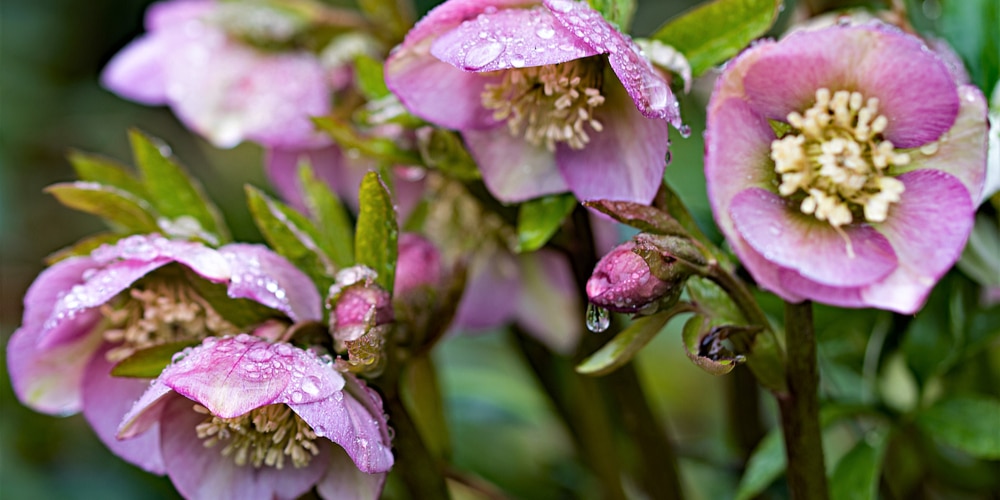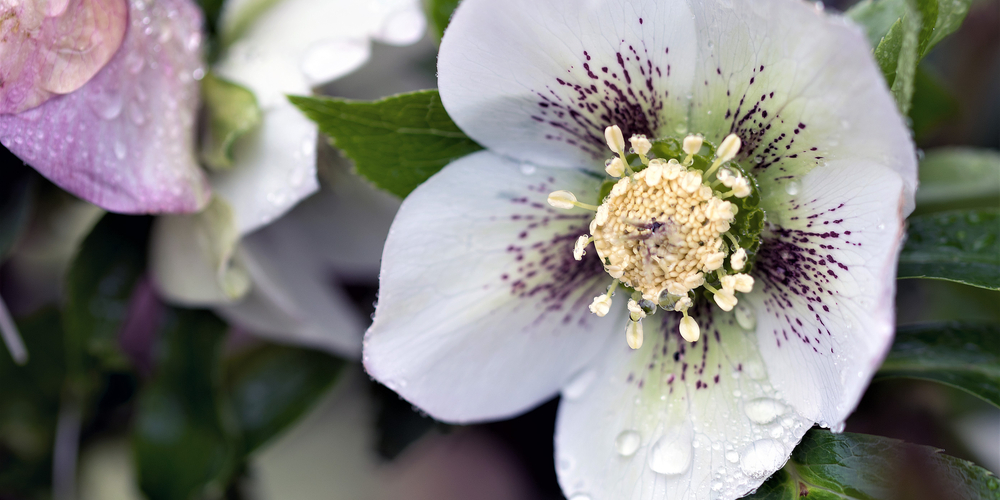Hellebores, also known as Lenten Roses, are stunning flowering plants that bloom in the early spring. They are among the earliest perennials to flower, making them ideal for adding color to your garden when most other plants are dormant.Keep reading this “Hellebores Zone 8” essential guide we put together.
Luckily, these stunning plants are easy to grow and perform well even in shady conditions, where most plants struggle to survive. They require little to no maintenance.
Hellebores Zone 8

Hellebores’ foliage is thick and dense, with palm-like leaves. The blossoms resemble flowers, which gives this plant its common name. Because hellebores’ foliage remains attractive all year round, you can use them to create a backdrop in your garden. But can you grow hellebores in zone 8?
However, you will have to clean the dried leaves that accumulate over time to avoid them causing rotting. Don’t forget that hellebores are toxic to people and pets: if you have kids, dogs, or cats running around your garden, you may have to consider another option for your yard.
Characteristics
Hellebores produce stems that rise from the root system to form clumps that can reach up to two feet in height. Its bell-shaped flowers consist of sepals that surround an inner flower. You can find varieties in different color shades. There are more than 20 species of this plant, each of which may have slightly different requirements.
These plants are ideal additions to any garden: they look stunning, are relatively easy to grow, and bloom earlier than most other plants. Plus, hellebores are long-lived: you can expect to get blooms for at least ten years after planting, provided that you give them what they need to thrive.
Hellebores Zone 8: Caring Tips
Growing hellebores is not a challenging task. If you give them what they need to thrive, these plants will perform well in most conditions. They are hardy from USDA hardiness zones 5 and 9. However, they won’t survive harsh frosts. Luckily, if you live in zone 8, that shouldn’t concern you.
Plant them in partial shade to protect hellebores’ leaves from the bright sun rays that might cause them to burn. The ideal location would be under deciduous trees, where the foliage can shade your plant during the hot months of the summer but expose it to direct sunlight when the temperature drops in the winter.
These plants grow best in well-draining and rich soil. If your ground is compact or poor, make adequate amendments. Add organic matter like manure or compost to increase the nutrient content and improve water retention.
Mulching around your plants will help regulate the temperature in the soil and keep your hellebores moist even during dry months. These plants prefer alkaline or neutral conditions. Carry out a pH test before making any amendments. If your soil is acidic, add lime to make it more suitable for hellebores’ growth.
Hellebores like moisture but shouldn’t be left to sit in wet soil: their roots will rot fast. While you will need to water your plants regularly during their first year of life, you can reduce the frequency in the following years. Indeed, once they establish in your garden, these plants will tolerate drought conditions. Additional water will only be necessary during dry spells.
Add organic fertilizer to boost flower production and ensure your plants grow lush. However, if your soil is already rich, fertilization might not be necessary. Prune your plant annually to promote healthy growth and remove old branches.
Varieties of Hellebore for Zone 8
There are plenty of hellebore varieties that can brighten your garden in zone 8. In this section, we mention some of the best for your region.
Anna’s Red is a hellebore plant that produces red-purple blooms and increases the looks of any garden with its green leaves veined with pink.
Philip Ballard is perfect if you like unique looks: its leaves are dark green and its flowers almost black. It is easy to grow and won’t require much attention from your side.
If you like brighter plants, the Citron might be a good option for you: its blooms are yellow and attractive. Pollinators love them!
Finally, the Wester Flisk is a variety with red stems and stalks that catches the eye in any setting. Its flowers are greenish, with shades of purple and red.
